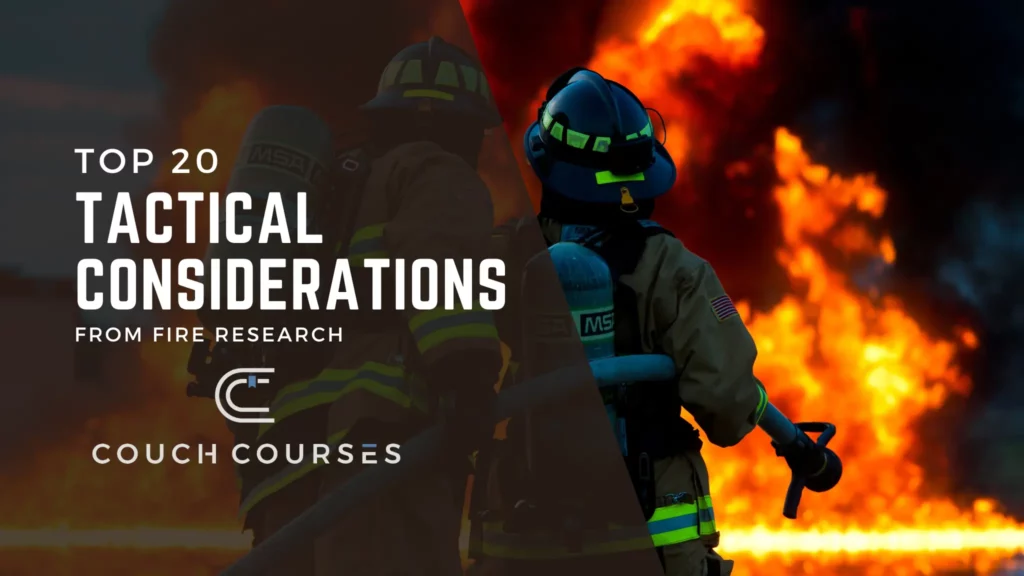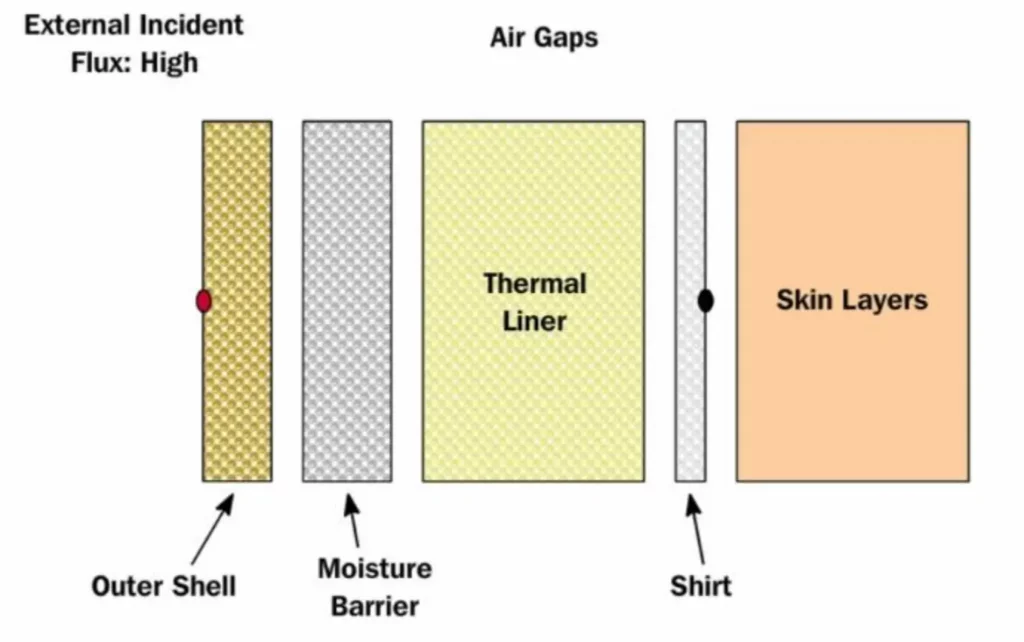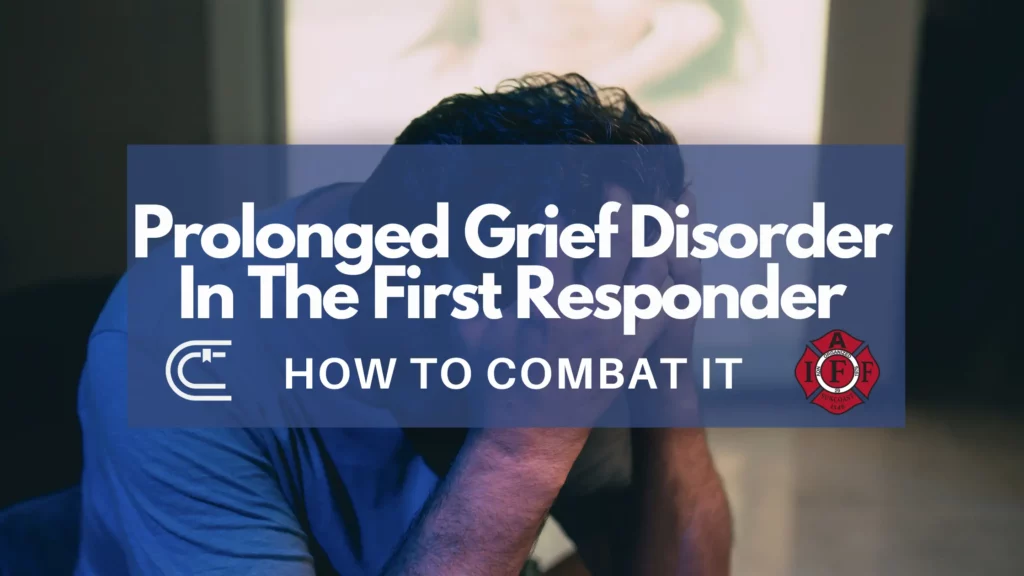Top 20 Tactical
Considerations from
Firefighter Research

Tactical considerations from research
While studying for my lieutenant promotional exam with my agency, I am finding many references to Firefighter Tactics and Strategies I and II.
I stumbled upon a presentation posted on the National Fire Protection Agency (NFPA) website, sharing the same title as this blog.
This presentation is credited to the then Director of Underwriters Laboratories Inc, Steve Kerber, PE. The presentation can be located at this link.
I want to list this interesting presentation in blog format to make it easier to view and share the research on making tactical decisions on the fire ground. I hope this will spark some conversation around the tables in fire stations. Who knows, maybe even save a life.
#20 - No amount of technology is going to replace the need for you to know your profession.
I think this one goes without much explanation. I can envision a robot firefighting machine where we stay in the cab of the hover fire engine on scene of a fire with entrapment. To have the gears break up, or worse yet B-shift forgetting to charge the battery. Now what?
All of the tools in the world will never replace experience and knowledge, this is why we know classes and training are our #1 life savers.
#19 - Your workplace has changed, you have to evolve.
We have all heard about legacy fuels and current fuels. We know how everything is going to plastics and petroleum-based. This increases the heat in our fires, dramatically increasing fire growth rates. The presentation linked to this UL video with a side-by-side comparison of legacy fuel burn versus modern fuel.
Consider our current staffing and response times. The fire is gaining an advantage on us regarding growth which leads to:
- Shorter time to collapse
- Shorter time for escape for residents
- Shorter time to flashover
#18 - You never want to be between where the fire is and where it wants to go without water or a door to close.
One of the most significant changes I have witnessed over the years is a deeper understanding of the flow path. Several other points in this presentation also hit on the science behind flow paths, so I will leave it for discussion later, but the biggest takeaway is to be AWARE.
#17 - Fire flows from high pressure to low pressure.
We know that the pressure gradient naturally attempts to find equilibrium from higher pressure to lower pressure. In fires we know that this means that fire will follow the path of least resistance. Making openings is critical to fire control.
This is why we advocate ventilating nearest to the seat of the fire.
#16 - Vent, Enter, ISOLATE, Search (VEIS).
Staying true to the theme of UL’s research entering rooms and searching needs to be accomplished with the same considerations to flow path. Tactical considerations need to be taken into account of where is the fire, where does it seem like it is going to go? Where are the victims most likely located? We know that victims tend to be in or near bedrooms regardless of time of day. Opening a window if you can, then closing the door and windows to limit air flow, and searching a room can be critical in effecting a rescue. There is a great article on Firefighter Nation that dives deeper into the VEIS tactic.
#15 - Venting does not always lead to cooling; well-timed and coordinated ventilation leads to improved conditions.
There is a common miss-understanding that venting will always cool down a fire room, and make it more tenable. This is not accurate, as is the case with most things I avoid the always and never statements. Properly timed, placed and coordinated ventilation can help products of combustion escape a room improving visibility and increase survivability rates for victims. The UL has posted their experimentation in a hands on website presentation that can be found here. There are multiple scenarios shown in a 1200 sq ft home and it is a great tool to help you witness the differences in ventilation.
#14 - Water in the eaves can get the water where it needs to go for attic fires.
Sometimes we get so fixated on attempting to locate the seat of the fire, and waste time getting water on the fire. As we wait for making access to a home, entering, finding attic access, or making access the fire continues to grow. An eave vent can be pulled, and water placed directly through the opening putting water on the fire. Do not forget this possible tactic.
#13 - Don’t let our training props set us up for failure.
You fight the way you train, so train the way that you fight.
Thankfully, we do most of our training in simulated situations. However the lack of hands on experience means that sometimes we are training to perform a task on a prop that may not function the same in the real world. That forcible entry prop? Yeah probably not going to have a real door being held shut with some wood. Ensure that we are using these training props as that, props. We are exercising the skill, while training take time to discuss the potential variations people may come against. Look for people who have more experience than you to teach you real world.
#12 - Forcing the front door is ventilation and must be thought of as ventilation.
I hope you are gaining the same insight I am from this presentation by UL and realizing that any opening to the outside should be considered as ventilation. I have always been taught to control doors, and windows but never really put it in the same view as ventilation. When you put it in that perspective it is clear the importance of controlling the flow path. Once that front door is open, where is the fire trying to go?
#11 - Controlling the door: Limit the air, limit the size of the fire.
Piggybacking off of #12, shut that door as close as you can on the hose line to limit the airflow. Also consider the wind direction and speed when choosing an access point.

#10 - No smoke showing means nothing. Once an opening is made read it.
There are entire classes dedicated to reading smoke, however, the importance of understanding that homes are better sealed and typically ventilation limited upon arrival. Once you make access ensure you are taking a moment to read what the smoke is telling you. Tunneling vs lifting smoke should at-least trigger awareness that you are adding oxygen to the fire.
#9 - Coordination of vertical ventilation must occur with fire attack just like with horizontal ventilation.
The timing for the decision to provide vertical ventilation does need to be carefully coordinated with the engine company. In areas with close-in companies, or where robust engine and truck crews arrive together, early vertical ventilation is a great strategy to improve conditions for the rapidly advancing engine crew, who will immediately apply water.
In areas where staffing is at a premium, early vertical ventilation in the absence of a ready hose line could mean the difference between salvaging part of the building or ending up with a parking lot.
#8 - Knowing how your turnout gear works is critical. Energy flows from high to low.
Similarly of how pressure gradients work high to low, heat transfers hot to cold. Our bunker gear is made of many layers and air pockets. The key take-away from the UL study is that once you begin to feel warmth on your skin under your bunker gear, your gear has reached its absorption limit of heat energy and is beginning to transfer it to you.

#7 - Keep the wind at your back.
Keeping that higher pressure to your back will help keep you out of the flow path, or desired direction the fire wants to go. Imagine a fire in a back kitchen, you enter from the leeward side of the home’s front door, and as you make entry the window in the kitchen breaks allowing high winds into the fire room. Where is that heat and fire going to attempt to go? Right back towards you.
#6 - Thermal imagers may help indicate there is a basement fire but can't be used to assess structural integrity from above.
When a fire is under a floor, the ceiling temperatures of the floor below maybe extremely high impinging on the supports of the floor you are looking at in the TIC. However, the carpet padding, carpet, or other flooring material maybe hiding from your view the temperatures that lay below.
#5 - Fight the fire on the level it is on.
This speaks more specifically to basement fires, as trying to gain access to the seat of the fire is extremely important. However this rule could also be relevant to multiple story homes/structures. You do not want to be above a fire approaching down on it, as the hot air is rising and attempting to escape. Sometimes your best bet is to put water on the fire from an external opening at the same level, to get more water directly on the seat.
#4 - Use a broken stream to flow water on solar panel systems.
There is a 30% increase in solar panel system installations all across the United States. Solar systems pose their own special types of electrical hazards as they can make power while exposed to light regardless of being shut off the grid. These solar arrays can also block the ability for ventilation efforts. UL has an entire online course dedicated to solar panel safety.
#3 - Water does not push fire.
NIST and UL were able to prove in testing that water does not push fire path around a structure. There was hesitation from many fire officers to not spray water in the opening of a window due to this miss-understanding. The studies are showing transitional attacks are beneficial to fire growth, the quicker you can get water on the fire the better. Be mindful of not using water streams to unintentionally ventilate the fire however, and ensure that exterior attacks are always coordinated with interior efforts. They should seldom be done simultaneously.
#2 - Door closest to the fire trucks should not dictate line/stream placement.
Grab that pre-connect and go through the front door! A 360 size-up needs to be accomplished and sometimes an alternate pathway maybe more beneficial to isolating a fire from exposures, and potential victims. Take into consideration all the factors, wind direction, fire path, exposures. Choose the right access point.
#1 - Flow path and suppression must be considered together.
After reading the presentations and exploring the research. It is clear that flow path has a direct impact to growth, and ultimately suppression is the attempt to stop fire growth to the point of extinguishment. This relationship needs to be correlated and considered in every firefighters brain as they fight fires.
I hope this summary of the UL research, and links helps you and your crews discuss important considerations around fire tactics. I enjoy lists like this as they are a great jumping point to lead me down the fire rabbit hole.
Be sure to follow Couch Courses on Facebook, Instagram, Twitter, and LinkedIn for special offers, new courses, and more!





